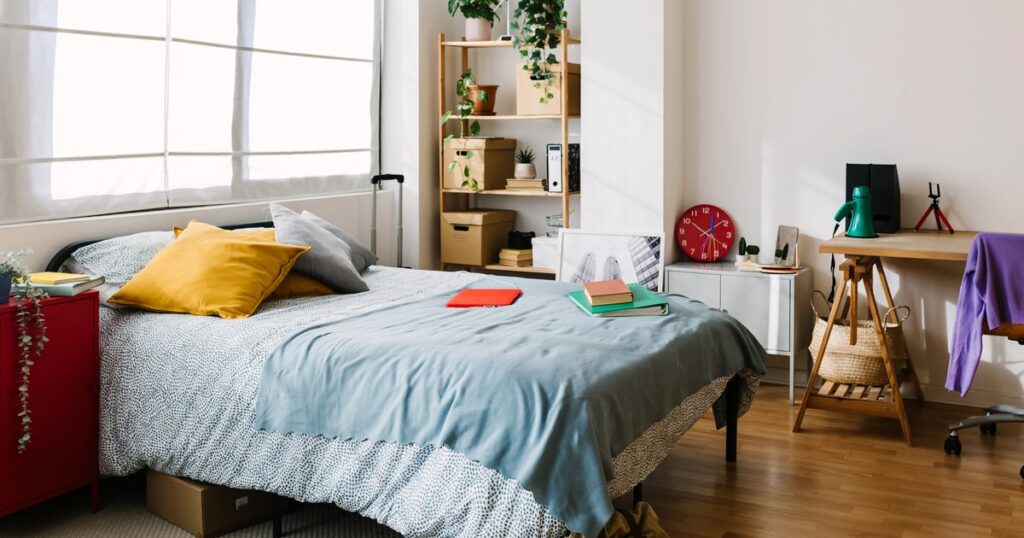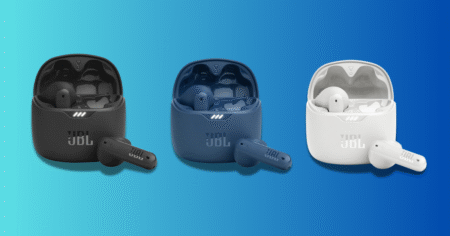People are very aware of the germs that lurk in public places like grocery stores and airports. But less thought goes to the potentially harmful microbes in private spaces like your bedroom.
“We all have this image of our bedrooms as being a sanctuary, but actually, there’s a surprising amount of bacteria, fungus and allergens there,” Carol McLay, an infection preventionist and president of the Association for Professionals in Infection Control and Epidemiology, told HuffPost.
To help folks protect their health at home, we asked experts to break down the germiest areas in bedrooms and share their advice for reducing contact with harmful microbes.
Pillows
“Pillows and pillow cases are a hot spot for bacteria, fungi, dust mites and dead skin cells,” said Kelly Reynolds, a professor and chair of the community, environment and policy department at The University of Arizona’s Zuckerman College of Public Health. “These contaminants can make you sick, spread skin infections and trigger respiratory symptoms or asthma attack in susceptible persons.”
Think about how much of your life you spend sleeping in your beds with your head on the same pillow. It might be one of your most regularly touched household items.
“There’s a statistic that a two-year-old pillow can weigh up to 10% more from just from dust mites and skin cells,” McLay said.
She pointed to a 2005 study out of the U.K. that found pillows can contain millions of fungal spores, particularly Aspergillus fumigatus.
“A professor who worked on the study said that we know the pillows are inhabited by the house dust mite, which eats fungi,” McLay said. “A theory is that the fungi are, in turn, using the house dust mites’ feces as a major source of nitrogen and nutrition, along with human skin cells. There could therefore be a miniature ecosystem at work inside your pillow.”
Fortunately, there are ways to keep the ecosystem at bay, but we’ll get to that later.
Sheets
“Bed sheets can be similarly contaminated but also have additional risk of excess fecal and skin bacteria accumulating from our bodies along with large amounts of sweat, skin oils and dead skin cells,” Reynolds said. “If you eat in bed or sleep with pets, the contamination levels of bacteria, dust, hair, and pet dander can dramatically increase.”
This is why many people change into their “inside clothes” before touching their beds after returning home.
“Sheets collect microbes like a sponge and offer a nice place for them to grow such as moisture, heat, and food,” said microbiologist Jason Tetro, aka “The Germ Guy.”
Mattresses
“How often do people clean their mattresses? Probably never,” McLay said.
Over time, mattresses collect dust mites, dead skin cells, sweat and other things that can trigger allergies and asthma and also degrade the quality of the mattress more quickly.
“While bed sheets and pillow cases can be washed, accumulation of contaminants in mattresses may be more difficult to control,” Reynolds said.
Goodboy Picture Company via Getty Images
Light Switches And Door Handles
“Germy places in your bedroom are obviously going to be any high-touch surfaces, so your light switches and your door handles,” said McLay. “These are things that are touched quite a bit but don’t necessarily get cleaned very often.”
Your thermostat and bedside lamps might also fall into this category.
“Whatever’s on our nightstand doesn’t get cleaned very often,” McLay said. “So you might want to start making that a more regular part of your schedule.”
The Floor
“One of the most germ-filled areas is the floor,” Tetro said. “The human body continually sheds microbes and this leads to contamination of surfaces.”
He noted that walls and tabletops may also have microbial contamination, but it tends to be in fewer numbers.
“Feet inevitably will contaminate floors and that can build up over time,” Tetro explained. Most bacteria and fungi can survive for days ― and viruses for about a day ― so they can accumulate and grow in numbers. While most of them will be skin-based, some can also be fecal, especially if pets are also frequenting the bedroom.
Studies have suggested that some of these bacteria may be antibiotic-resistant, Tetro added, noting that this could be a problem if it leads to an infection.
TV Remotes
“Consistently I find that electronics are some of the germiest sites in a home,” Reynolds said. “Remote controls and cell phones are commonly used in the bedroom and these frequently touched, rarely disinfected items can be important reservoirs for germs to collect.”
If you share your room with your spouse and even your young children on many nights, keep in mind that the remote is coming into contact with multiple individuals who can spread germs. Meanwhile, your cell phone is traveling to your room from many different places.
“If your phone goes with you to the bathroom, it may become contaminated with disease causing fecal bacteria and viruses,” Reynolds said.
Carpeting And Upholstery
“Any kind of carpeting and rugs is going to trap dirt, dust mites and bacteria,” McLay noted. “The same goes for your curtains and your upholstered furniture.”
She emphasized the importance of vacuuming your carpeting and upholstery but acknowledged that it’s more challenging to clean fabric items like curtains and furniture ― compared to simply spraying and wiping a solid surface with disinfectant. But it’s an important thing to remember nonetheless.
“Upholstered or fabric based bed frames, towels and napkins, laundry bags ― these may be specially affected avenues due to high contact by hands, presences of fomites that are ideal for germs, and often times, a tendency to not clean these items and areas frequently,” said Jagdish Khubchandani, a professor of public health at New Mexico State University.
How To Prevent The Spread Of Germs In Your Bedroom
“The majority of microbes are harmless and won’t lead to any problems. However, the potential does exist for skin irritation, allergies, and odor,” Tetro said. “So, whether you choose safety or stink, make sure you clean the bedroom at least once a month and change those sheets every few weeks ― or sooner if you sweat heavily during the night.”
Although the various surfaces in bedroom might not need as much attention as those in bathrooms and kitchens, you still need to do regular cleaning and disinfecting.
“It is a good idea to establish routine habits for bedroom hygiene,” Reynolds said. “Wash bed linens weekly in hot water and use the high-heat cycle on your dryer for the most effective germ kill. Keeping extra pillowcases on hand will allow you to change them every few days so that the site were you lay your head ― the area on your body where germs are most likely to enter via the eyes, nose and mouth ― will have minimal levels of contaminants.”
She recommended vacuuming carpets, mattresses and upholstered furniture regularly. There are special vacuums and other products that can be a real game changer, especially for mattresses. Don’t forget to wash your actual pillows and replace them in the recommended time frame as well.
“Use of hypoallergenic pillow and mattress covers can also keep allergen counts down,” Reynolds said. “And don’t forget to wash pet beds frequently as well.”
If you let your pets onto your bed, make sure to at least wipe down their paws. For high-touch hard surfaces like TV remotes, be sure to frequently use disinfectant.
“Bedroom cleaning should be thorough and frequent,” said Khubchandani, who also recommended cleaning door handles, knobs, lamp buttons and “creating a partition of some kind between a bedroom and restroom if they are attached with each other.”
Taking the time to remove moisture, dust and food crumbs from surfaces in your bedroom can also go a long way.
“A hygiene routine in your bedroom is even more critical if someone in the home is sick,” Reynolds noted. “Increasing the frequency of the prevention methods above may help to dramatically reduce the spread of infections to other people living in the home.”
Read the full article here








